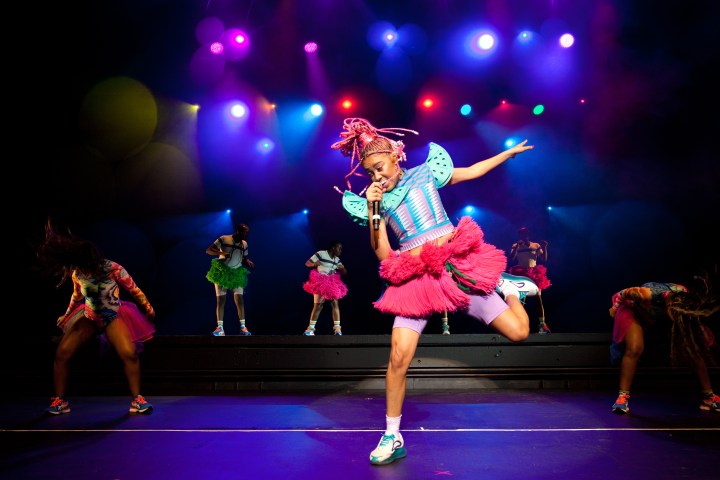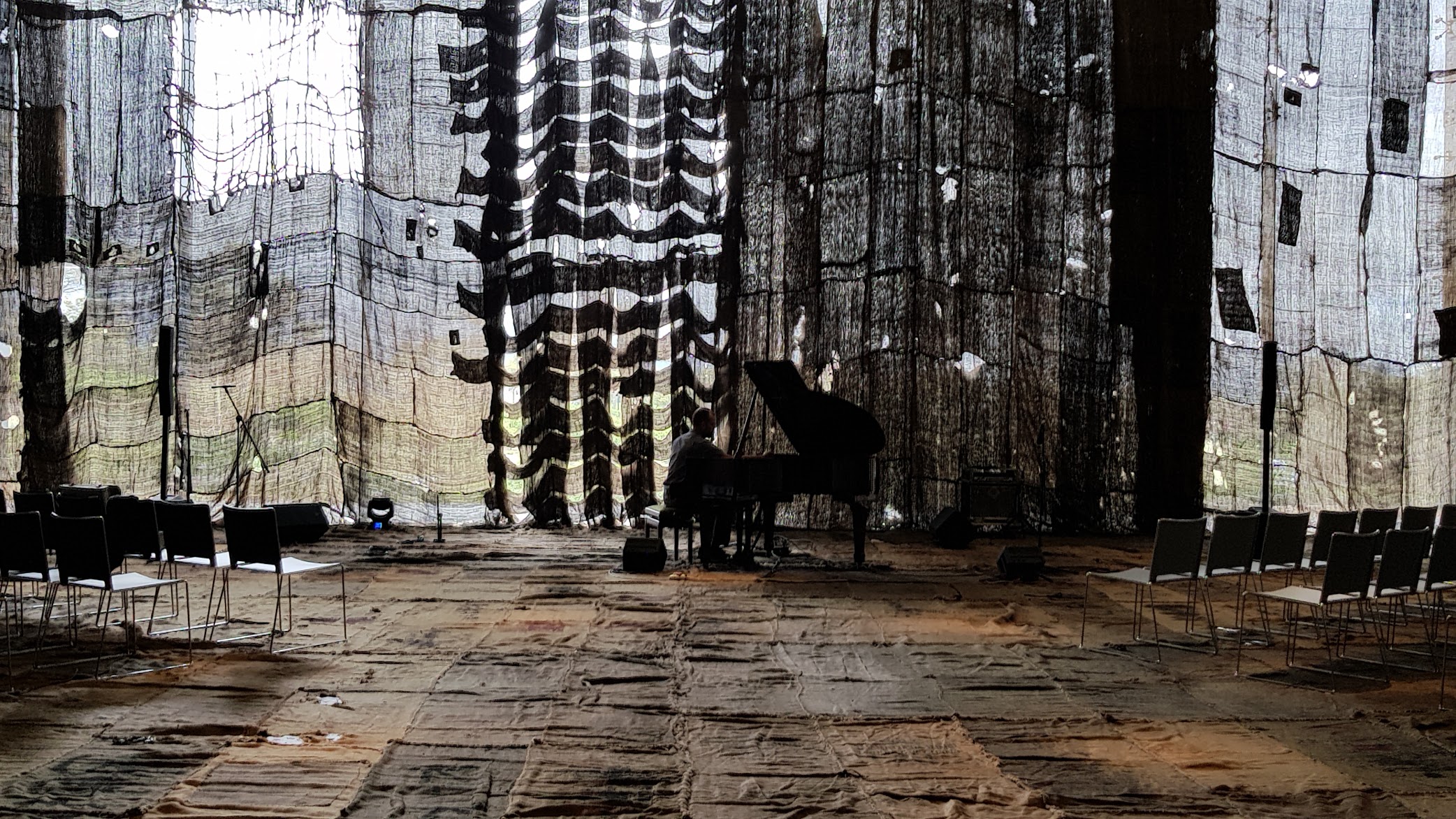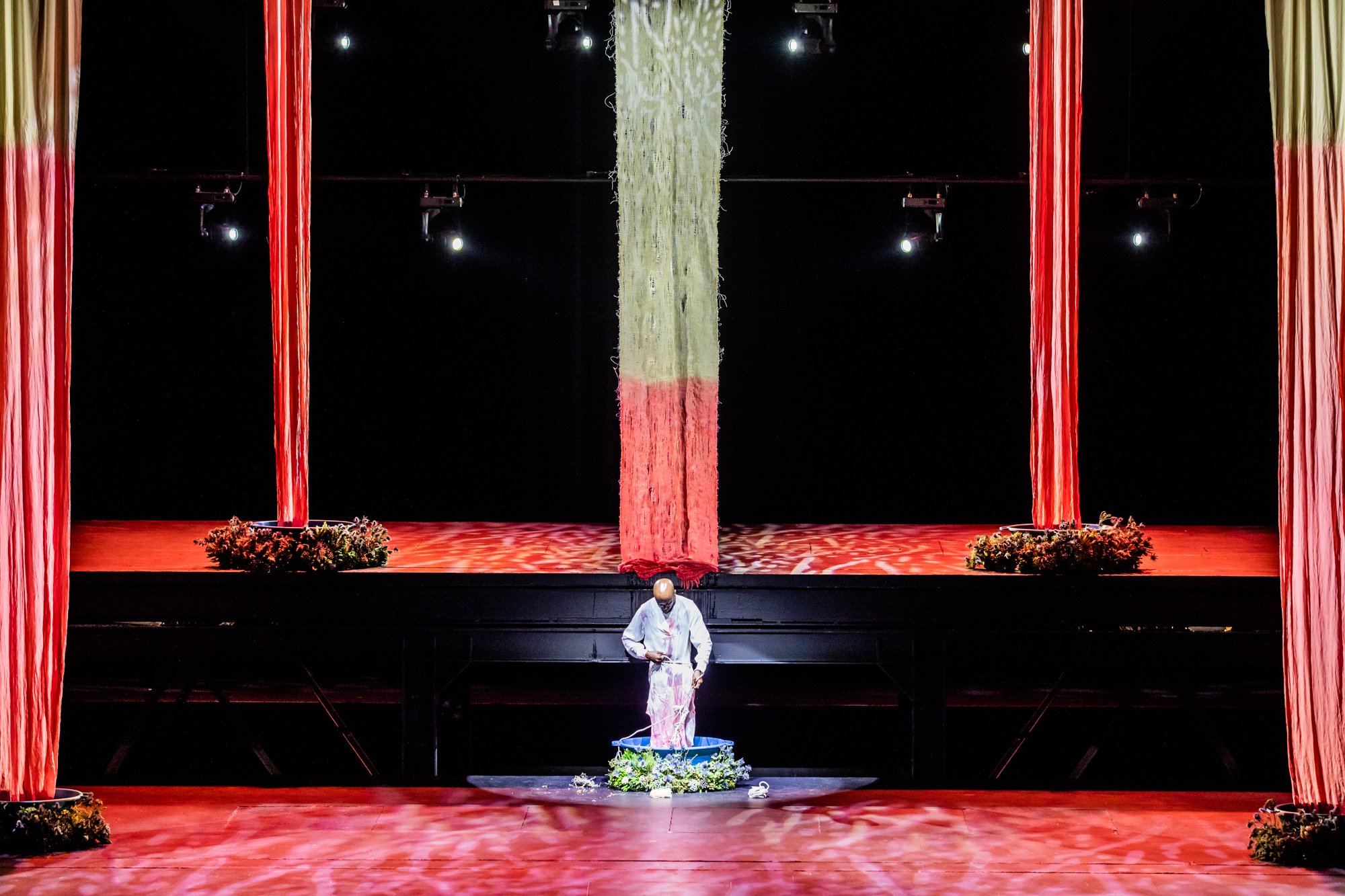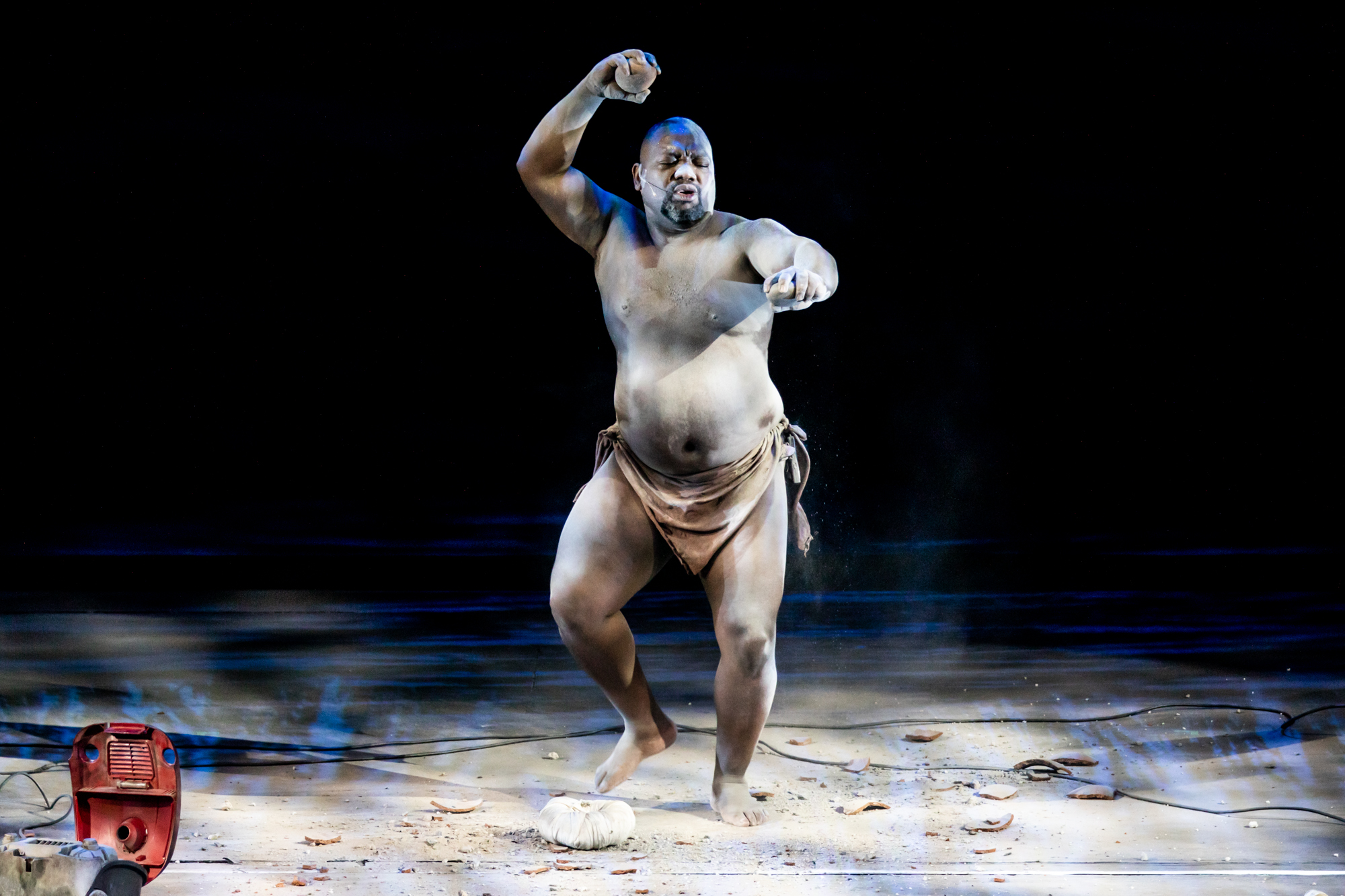MAVERICK LIFE
Design Indaba 2020: A commitment to changing the world, for good

The visionary initiative of Ravi Naidoo, the Design Indaba, which turned 25 this year, was uplifting, optimistic, beautiful and compelling once more. And yet again, it confirmed that there are still people who are committed to changing the world.
Take the case of Mazbahul Islam, an inspirational millennial from Bangladesh. A business school graduate, who grew up in the high-rises of Dhakka, he started working in user interface and user experience (UI/UX) on graduation, when one of his business school cohorts, Rafi Islam, called him one day. Islam’s uncle had taken ill in a small, rural village and his brother (Islam’s father), had used the only transport available to get him to the nearest medical facility 20km away on rough roads.
The transport is an open, flat-bed rickshaw/tricycle structure and his uncle died en route. The four graduates came together to form a start-up: They created an emergency service, fit for its environment, using traditional transport from adapted tuk-tuks, or tricycles. Each tricycle is equipped with medical emergency facilities, buoyed by robust shock-absorbers, and this has created a career path for rural ambulance drivers and paramedics.
And if you thought this was cool, wait for the astonishingly accessible renowned scientist, Indian-born, MIT-trained Bioengineering Professor from Stanford University, Manu Prakash, who is also a MacArthur Fellow. A crowd favourite, quiet-spoken and humble, and deeply committed to his work across the world – from India to Madagascar – Prakash has made science accessible, affordable for all and participative.
After noticing an electric centrifuge being used as a doorstop in Uganda where there is no power, Prakash returned to the laboratory and, experimenting with children’s toys, like yoyos, he devised an inexpensive rotating mechanism, the Paperfuge, based on button and string tools that date back to Ancient Greece, and appear to be present in every culture. This centrifuge, which is essential in medical diagnosis from blood and stool samples, runs at 125,000rpm, which is equal to 30,000 G Forces per atom. Underlining his thinking, he noted: “It is not about developing and developed worlds, but the haves and have-nots: Of 2 billion children in the world, 1 billion go to ‘schools’ without walls; 1 billion people have to walk twelve hours to access healthcare!”
But Prakash’s most popular invention has to be his microscopy project – a hit across the world. An origami-like fold-up paper unit, the Foldscope has turned communities into contributing scientists in the most inaccessible parts of the globe, at $1.75 per unit: “Of 3,500 mosquito species, only 40 carry the deadliest disease in the world. But you can only measure them in 575 locations in Africa. These are the places where entomologists, not mosquitoes, live.”
Having built a community of one million contributing scientists across the world, in the most remote parts of the globe, he notes that “the future of science will not be written by academics but by people who are the first in their generation to experience science”. Adding fun to the science, he noted: “Mosquitoes use their wings to produce sound – now available for download as a ringtone”.
From South Africa hails Vukheta Mukhari, a master’s candidate in civil engineering at the University of Cape Town, who, with his team is working on making the world’s first bio-brick from urine.
Working with brick, mortar and concrete mega-structures is Ghanaian-born artist, Ibrahim Mahama. Already an acclaimed visual artist, it has been his mission to create significant art that spoke of his roots – jute bag roots and colonisation.

Ibrahim Mahama at the Norval Foundation (Image by Kathy Berman)
Having created a sensation at key sites and major art exhibitions of the world, where he covered buildings (Christo-like) with jute bags, telling a powerful message of colonial return, (from the Venice Biennale, to Cape Town where he was commissioned to create an installation, Labour of Many, for the Norval Foundation in 2019), he has focused on his homeland, and his home-town of Tamale. He not only replicated the work, but began creating (and resurrecting colonial), structures that can be used as areas of production and learning, between.
Ghana, the home of cocoa, colonised by Britain, is filled with abandoned relics of colonialism: railway sidings, grain silos, industrial warehouses, being reclaimed by vegetation, and sometimes, the people, as well as aeroplanes. One of his most whimsically audacious projects was to uproot abandoned aeroplanes dating back a century, and transporting them to his home town in the north where he has created a centre of learning by turning the aeroplanes into classrooms.
His philosophy is wry: Turn colonialism on its head. For the Manchester International Festival in 2019, he took all the elements of abandoned railway carriages – seats and rails – and shipped them back to England, and reconstructed a “Parliament of Ghosts”. He has now taken the abandoned and reconstructed relics of colonialism back to Ghana, to create a vibrant people’s parliament in Tamale.
Working with history, reconstructing, deconstructing and resurrecting for meaningful production, his mission is to work in-field, with what is there. Of the humble jute bag that has wrapped mammoth theatres and palaces in both the global North and Ghana, he notes: “I used jute sacks because for me, the history of crisis and failure is absorbed into the material. Their history speaks of how global transactions and capitalist structures work. And because how their humbleness contrasts with the monumentality of the buildings they cover.”
Reworking her Tsonga roots – in fabrics as well – is local music sensation Sho Madjozi, (Maya Christinah Xichavo Wegerif), who kicked the festival off with a show-piece psychedelic, Afro-futurist style, interwoven with a powerful narrative; she talked about history, colonisation, tradition and her contemporised reworking of her Tsonga culture. She traced back the history of the Xibelani dance and the potential origins of the Tinguvu skirt, and shared her dream to regularly stage a massive Xibelani Festival in Giyani – to celebrate her heritage, upscaled and revived for global consumption – in technicolour, rap and gqom.
- Sho Madjozi (Image courtesy of the Design Indaba)
- Sho Madjozi at the Design Indaba 2020, 25th edition (Image courtesy of the Design Indaba)
When the Design Indaba moved from the Cape Town International Convention Centre to the Artscape Theatre some years back, the intention was to ramp up the spectacle with theatrical technologies. LGBTQI+ fashion activist Sunny Dolat from Kenya not only shared his clothing design philosophy, but performed a beautiful piece using massive drapes from white muslin, lowered from the trusses into vast vats, and then receding to the rafters with red dye dripping downwards, as Dolat too, in his beautifully tailored white kaftan, immersed himself in the red liquid and emerged dripping.

Sunny Dolat (Image courtesy of the Design Indaba)
The most profound and resonant performance was by South African actor, Nhlanhla Mahlangu, who has collaborated with the South-African born global luminaries of our artistic practice (William Kentridge, Robyn Orlin, Gregory Vuyani Maqoma and Hugh Masekela), and found time to complete his Masters of Arts in Creative Research.

Nhlanhla Mahlangu (Image courtesy of the Design Indaba)
Taking the audience back to his youth, Mahlangu performed in loincloth, accompanied by an absurdist old vacuum cleaner as a key prop, and so poignantly brought home the realities of apartheid South Africa in the 1980s: the sadistic decimation of human – and animal – lives by the brutal apartheid police machinery. He poetically reminisced about accompanying his grandmother to work and bonding with Penny, the pet dog of her white employers.
When the employers migrated, his granny was turfed out and became a street trader. Penny joined them in the tin shack in Phola Park and ate better than Nhlanhla did, but also wandered around the informal settlement; and Penny produced little Pennies and little grand-Pennies, until one night the police arrived. The people fled; the houses and animals were left behind; the shacks burnt to the ground. They returned to reclaim smouldering ashes and corpses. Chant, the first of his works on the chant theme is a piece that should be compulsory for all South Africans. It drives home so much of what has been forgotten in the reconciliation and bonhomie of the 90s, and the millennial hate-speech that remains disembodied from the realities of the apartheid and post-apartheid state. Our hearts broke for thousands of Pennies and Nhlanhlas across our land.
At this year’s festival, “Impact” seemed to be the buzz word, as were “design thinking, collaboration, customer journey and user-centred design”. But not just buzz-words or coda for design practise; the exploratory Rape Kit was another innovation by a young masters graduate, Antya Waegemann, who managed to deconstruct over 20 unintelligible and alienating steps administered by professionals, to rape “victims, survivors” under forensic examination, into a kit that works with the emotional and medical needs of the survivor – showing us how such user-centred work can radically transform such experiences in the most intimate way. The kit is being prototyped for Silicon Valley funding.
The most uplifting and humorous collaboration was about four friends, sitting in a pub. It sounds like a bad joke, which it was – for some. Utterly disheartened by the Brexit inequity, they started a movement; calling themselves Led By Donkeys, the four men decided to replicate offensive twitter posts by offensive politicians – in billboard format – and plastered these on billboards across the UK in the dead of night. The movement spread and evolved into massive flags during protests, beach sculpture and finally, a projection on the White Cliffs of Dover, imploring the EU to retain the British star from the EU symbol “for safekeeping” until Britain returns.
When collaboration, inclusion and community come together across academic disciplines, impact happens, and provides a key to global advance and innovation. It was the designers collaborating with scientists, who left the audience gaping at the possibilities of nano- and bio-technology. While one speaker focused on the bacteria inhabiting our bodies, two others examined the organic structure of both colour and fabric. Bio-designer, synthetic biologist and academic, Natsai Audrey Chieza, a D&AD prize winner, hailing originally from Zimbabwe, is obsessed with the structure of bio-friendly pigmentation.
Chieza’s work with chemists, engineers and scientists, is forging multidisciplinary innovation in both practice, and academic research. She shared how the parameter-defined discipline of science, when fused with the beyond-constraint disciplinary practice of design, allowed her to interrogate an organic pigment option; the idea was to prove that progress requires true collaboration, while posing the question: “Why are designers not upstream in the invention and innovation process, if our scientists are designing for real-world application?”
Fashion technologist Elissa Brunato, set the collective guilt festering in the audience with her deconstruction of the life cycle of the sparkling sequin, hoping to disrupt the industry and return it to a bio-friendly model. Sequins are made from plastic, which derives from petrol, and are one of those nano-pollutants that are clogging up our landfills, oceans and planet. She, and Natsai, are fusing design with biomimicry: using collagen, she has created her first prototype bio-iridescent sequins.
Another young graduate using biomimicry, Catalinao Loatero, hailing from Columbia is prototyping trees and leaves to create energy. Troubled by the social devastation wrought on rural, indigenous peoples deprived of electricity, infrastructure and services by her government, she set about researching an alternative energy option within the structure of leaves, which create an internal energy. Her prototype mimics, and extends, the shape and function of leaves to produce an innovative bio-friendly green energy.
- Catalina Lotero (Image courtesy of the Design Indaba)
- Barilla pasta, design by Catalina Lotero (Image, Barilla)
The algorithm geniuses were represented by the Head of Google Creative Lab, Robert Wong, whose tears and joy showed what massive corporates in the cloud can do to change the world for good.
Graphic designer Olimpia Zagnoli, with her whimsical designs not only shared her passion for colour, but her quiet activism. “I grew up in the ’80s, when young girls were given pink Barbies, pink everything. It was not fair – especially to the colour pink!” An activist for colour, she describes the uniform use of beige, forest-green and Scandi-grey for furniture. But her difference came in work for Barilla – the pasta producers: One of their directors was outed in Italy for his proclamation that being gay was antithetical to the traditional notion of the Italian family. At first, reluctant to design for the apologetic organisation, her iconic packaging for their new range of spaghetti graphically depicts a gorgeously bright lesbian couple embracing a plate of Barilla pasta.
Chinese architects Neri and Hu presented their iconic buildings, as did Chicago-based mega-structure architect, Jeanne Gang, whose passion for bio-diversity is incorporated into her high-rise buildings, conceptually and physically. Based on Cyril Ramaphosa’s 2020 State of the Nation address this year, she publicly committed to building a local biodiversity centre in South Africa in the future. British designer Paul Cocksedge has already commenced his project for a bridge over the Liesbeeck river in Cape Town.
As the 25th edition of Design Indaba ends, it’s easy to see how the scores of scientists, collaborators, designers, innovators and the 600 speaker graduates who have graced the festival over the past years have brought not only novelty and audacity, but also change and impact. And hope for a better tomorrow. ML





















 Become an Insider
Become an Insider